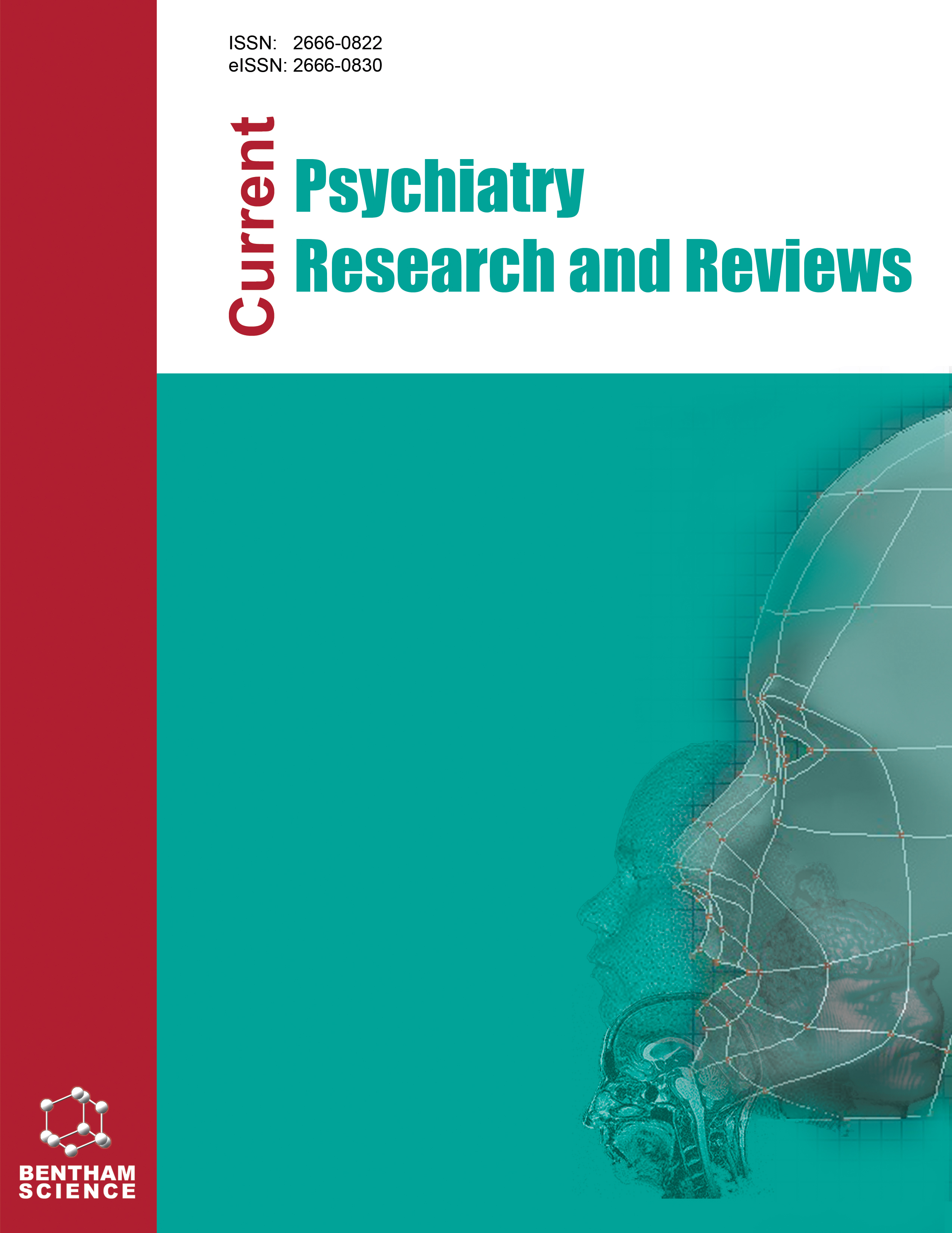- Home
- A-Z Publications
- Current Psychiatry Research and Reviews
- Previous Issues
- Volume 21, Issue 1, 2025
Current Psychiatry Research and Reviews - Volume 21, Issue 1, 2025
Volume 21, Issue 1, 2025
-
-
Pharmacotherapy of Psychological Disorders Using Psychedelic Drugs: A Treatise for Psychiatrists
More LessAuthors: Payal Ghosh and Debjeet SurPsychedelics are currently being examined once more as potential remedies for untreatable biological illnesses after decades of research problems. They are frequently regarded to be physically safe and do not frequently lead to dependency or addiction. The use of psychedelic substances in the treatment of mental illness and the adoption of the Substance Act of 1970 has classified psychedelic drugs as Schedul Read More
-
- Medicine, Psychiatry
-
-
-
Auto-aggressive Behavior as a Medical and Social Problem of Our Time: Definitions, Concepts, and Retrospective of Research by Russian Authors, Narrative Review
More LessBy Evgeny DarinThe study of autoaggression is one of the main areas of research work in psychiatry, suicidology, and psychology. Suicidal behavior remains one of the most dangerous forms of autoaggressive behavior. In recent years, both in Russia, and around the world, there has been an increased interest in the problem of non-suicidal injuries. This review aims to analyze, summarize, and present definitions of autoag Read More
-
-
-
-
The Secure Therapeutic Effects of Recently Developed Antipsychotic Drugs and Updated Neural Networks in Schizophrenia
More LessAuthors: Felix-Martin Werner and Rafael CoveñasIntroductionSchizophrenia and schizoaffective disorder are treated in most cases with antipsychotic drugs of the second generation. These drugs block dopaminergic and serotonergic receptors, i.e., D2 and 5-HT2A receptors, and cause different adverse effects, for example, movement disturbances of the extrapyramidal system and adverse effects of vital parameters and of the heart. These drugs treat positive sympto Read More
-
-
-
The Mismatch between Adult Smokers’ Abstinence Expectancies and Experiences at Outpatient Facilities: An Exploratory Study
More LessBackgroundSmokers’ expectancies about abstinence, that is the effects that smokers anticipate when they attempt to quit smoking, remain understudied. The aim of the present study was to examine the relation between smoking abstinence expectations and subjective experience over time among individuals in smoking cessation treatment.MethodsA total of 215 adult smokers seeking treatment at two Italian third-level Read More
-
-
-
Predictors of Relapse in Women after Substance Use Treatment: A Cross-sectional Study in the West of Iran
More LessAuthors: Faezeh Ghasemi, Saeid Bashirian, Fatemeh Mohammadi Fakher, Majid Barati and Salman KhazaeiBackgroundMany individuals undergo drug addiction treatment relapse after treatment. Additionally, a few studies have focused on the unique challenges faced by women in addiction recovery. Therefore, we aimed to identify predictors of relapse among women who have undergone drug addiction treatment to develop a more effective intervention program tailored to their needs.MethodsThe present cross-sectional study Read More
-
-
-
Juggle Between Work, Home, and Stress; A Qualitative Analysis Using Nvivo-12 on Working Women During the COVID-19 Pandemic
More LessAuthors: Shivani Agarwal and Rekha MewarfaroshBackgroundIndia and other parts of the world have witnessed a health emergency due to COVID-19 that immensely affected the globe. These infectious diseases changed the lives of people, and the condition of working women worsened due to the responsibility of work, home, children, family, house, etc., altogether simultaneously. In a patriarchal society like India, where women are considered as ‘nurturing sex’ where d Read More
-
-
-
A Study on Psychological Impact of Working From Home of Employees during COVID-19 Pandemic- a Cross Sectional Study
More LessAuthors: Sumedha Dondapati, Iniyan S., Ajay B., Maathanghi R. and Kavitha P.IntroductionWith the sudden onset of COVID-19, many organisations introduced a mandatory relocation of workforce from their workplace to their homes bringing in a work from home policy for their employees. The purpose of the study is to examine the positive and negative impact on quality of life of teleworking, thereby assessing the prevalence of psychological distress of employees working in COVID-19.MethodsA cross sect Read More
-
Most Read This Month
Article
content/journals/cprr
Journal
10
5
false
en


